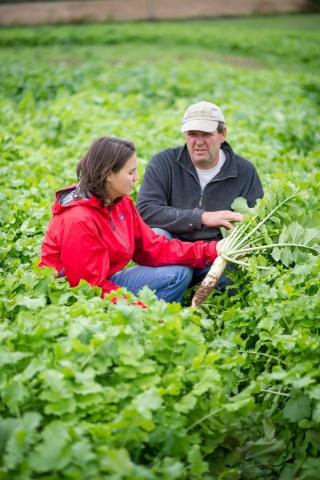What is a Cover Crop?
Cover crops should be viewed as a long-term investment in improved soil health and farm management. They can begin to pay for themselves in the first year of use, or it may take a few years for them to lead to a net positive return. For a detailed analysis of when cover crops begin to pay in different management scenarios, check out the SARE bulletin Cover Crop Economics: Opportunities to Improve Your Bottom Line in Row Crops.
A cover crop is a plant that is used primarily to slow erosion, improve soil health, enhance water availability, smother weeds, help control pests and diseases, increase biodiversity and bring a host of other benefits to your farm.
Cover crops have also been shown to increase crop yields, break through a plow pan, add organic matter to the soil, improve crop diversity on farms and attract pollinators. There is an increasing body of evidence that growing cover crops increases resilience in the face of erratic and increasingly intensive rainfall, as well as under drought conditions. Cover crops help when it doesn’t rain, they help when it rains, and they help when it pours!
Download the PDF Below.


